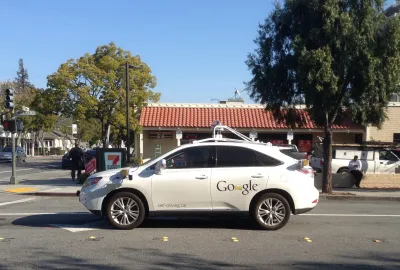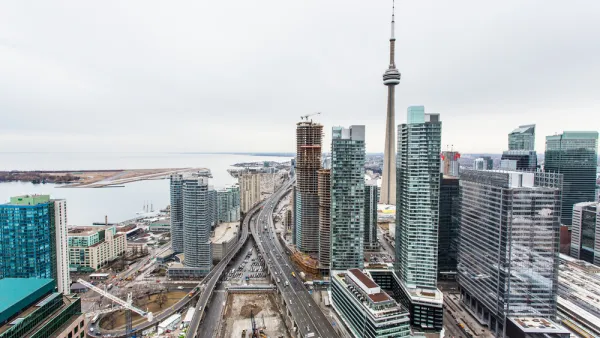Data collection used for planning purposes has traditionally focused on cars, rather than people. So far, innovative transportation technologies seem unconcerned with changing that pattern.

Joe Cortright cautions against the dangers in over-estimating the value of data in planning decisions. Though a believer in using data to inform decision making and problem solving, Cortright reminds us that "sometimes the quantitative data that’s available is too limited to enable us to see what’s really going on." Moreover, "incomplete data can lead us to the wrong conclusions."
Cortright chooses the case study of walkability to examine the shortcomings of traditional planning data. After examining reports of the pedestrian experience in Houston (and similar conditions around the country), Cortright states the problem: "Because we lack the conventional metrics to define and measure, for example, the hardships of walking, we don’t design and enforce solutions or adopt targeted public policies."
Further distorting the focus of planning and engineers is an overabundance of data on car traffic: "we have parking standards, traffic counts, speed studies, and 'level of service standards,'" and "[t]raffic engineers will immediately tell us when a road is substandard, or its pavement has deteriorated, or its level of service has become (or might someday become) degraded."
The implications of Cortright's argument reach into the future, however, and this is where planners have the power to demand more from policy makers. Recall the recent criticism of the city of Columbus' selection for $50 million in grant money from the U.S. Department of Transportation's Smart City competition—awarded for a project proposal that focuses on autonomous vehicles, rather than public, mass transit. Cortright's concern with the priority on self-driving cars and other futuristic technology:
New technology promises to provide a firehose of data about cars, car travel, car delay, and roadways—but not nearly as much about people. This is a serious omission, and should give us pause about the application of “smart” principles to cities and transportation planning.
FULL STORY: The limits of data-driven approaches to planning

Analysis: Cybertruck Fatality Rate Far Exceeds That of Ford Pinto
The Tesla Cybertruck was recalled seven times last year.

National Parks Layoffs Will Cause Communities to Lose Billions
Thousands of essential park workers were laid off this week, just before the busy spring break season.

Retro-silient?: America’s First “Eco-burb,” The Woodlands Turns 50
A master-planned community north of Houston offers lessons on green infrastructure and resilient design, but falls short of its founder’s lofty affordability and walkability goals.

Test News Post 1
This is a summary

Analysis: Cybertruck Fatality Rate Far Exceeds That of Ford Pinto
The Tesla Cybertruck was recalled seven times last year.

Test News Headline 46
Test for the image on the front page.
Urban Design for Planners 1: Software Tools
This six-course series explores essential urban design concepts using open source software and equips planners with the tools they need to participate fully in the urban design process.
Planning for Universal Design
Learn the tools for implementing Universal Design in planning regulations.
EMC Planning Group, Inc.
Planetizen
Planetizen
Mpact (formerly Rail~Volution)
Great Falls Development Authority, Inc.
HUDs Office of Policy Development and Research
NYU Wagner Graduate School of Public Service




























